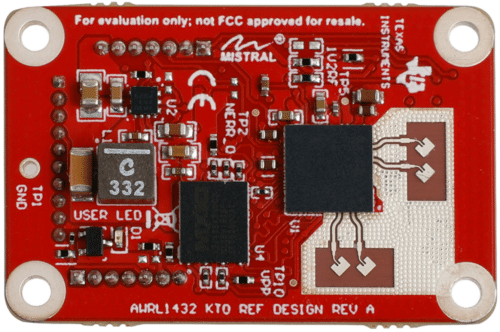The radar sensor reference design enables engineers to easily integrate gesture-based features like Kick-to-Open, obstacle detection, and automated parking into automotive systems.

The TIDEP-01036 mmWave radar sensor Kick-to-Open (KTO) reference design from Texas Instruments provides engineers with an affordable, compact solution for integrating KTO functionality into automotive systems. By using TI’s AWRL1432, a single-chip 77GHz automotive radar sensor, engineers can implement a system that utilizes a machine learning-based gesture sensing algorithm to detect a kicking gesture. This enables the activation of vehicle features such as power lift gates, trunks, and sliding doors, making the design ideal for various applications like KTO modules, obstacle detection, automated parking, and front cross-traffic assist systems. These applications improve vehicle functionality and safety through advanced sensing and automation.
Due to its small form factor, engineers can quickly evaluate and integrate this reference design into their end systems. The AWRL1432 sensor uses Frequency-Modulated Continuous Wave (FMCW) technology, with two transmitters and two receivers, to capture data on distance, angle, and velocity from reflected radar signals. This data can be used to detect specific gestures or the presence of an object. A typical 12V DC supply powers the design. It includes an onboard Local Interconnect Network (LIN) physical layer for communication with external automotive networks and support for SPI-based raw data capture.
The design also features onboard etched-patch antennas for the transmitters and receivers, providing a wide field of view (FOV) in azimuth with strong gain and broad bandwidth coverage. The antennas achieve a peak gain of over 4dBi across the 76GHz to 81GHz frequency range, ensuring effective radar signal reception and transmission.
Engineers can rely on the integrated, single-chip FMCW radar sensor, which operates in the 76–81GHz band and is built using TI’s low-power 45nm RFCMOS process. This sensor offers high integration in an extremely small form factor, making it suitable for low-power, self-monitored, ultra-accurate radar systems in automotive applications.
The reference design also includes two high-performance DC/DC converters to power the system. The TPS628502-Q1 is a 2A synchronous step-down DC/DC converter, offering high efficiency with adjustable switching frequencies from 1.8MHz to 4MHz. For mmWave radar applications, engineers are advised to operate the converter in forced-PWM mode to minimize emissions. The LMR43620-Q1 is a compact synchronous step-down DC/DC converter capable of handling input voltages between 3V and 36V, meeting the low standby power requirements for always-on automotive systems.
Lastly, the TLIN1021A-Q1 is a LIN physical layer (PHY) transceiver that supports low-speed, asynchronous UART communication for in-vehicle networking. With a data rate of up to 20kbps and compatibility with a 12V operating range, this transceiver enables seamless communication with automotive networks.
TI has tested this reference design. It comes with a bill of materials (BOM), schematics, assembly drawing, printed circuit board (PCB) layout, and more. The company’s website has additional data about the reference design. To read more about this reference design, click here.








